By Ana Rosa Ibáñez | Images courtesy CTM Festival 2019
Of course, CTM is not the first or the only event that aims to integrate arts, technology and sound. Not in Berlin, not in the world. But there is something about CTM that makes it special, and every attendee is aware of that. Maybe is the fact that it drags us out of our homes in the middle of the cold and the dark, offering in return long hours of sounds and strangeness. That’s already something. But the slippery essence thanks to which we appreciate the festival engrains rather in the fact that –even though it’s a highly technological event– it maintains a curatorial concept that wonders around the rawness of humanity, rushing towards a uniformed society, in a machinery universe. From the 24th of January until de 3rd of February we witnessed the encounter of sound, performance and technologies.
The concepts for the festival during the lasts years: “New Geographies”, “Fear, Love, Rage”, “Turmoil” and this year’s “Persistence” (to name a few); gather a breed of artists that although explore the machines from a technological perspective, manage to make use of them as extensions of their own bodies, of their distinctive voices; voices that speak of contemporary urgencies, that scream from uncomforted realities, calling each other from the extremes.
As its editorial team declares, “a decisive difference between artistic and scientific hypotheses is that art and music take subjective feelings, personal experiences, empathy, the imaginary and desire as their starting points (…), they offer transitory moments of radical pluralization. Thinking and acting on this basis is a form of resistance against essentialism and naturalistic misconceptions, against the absolute, and unshakable identities (…)”. [1]
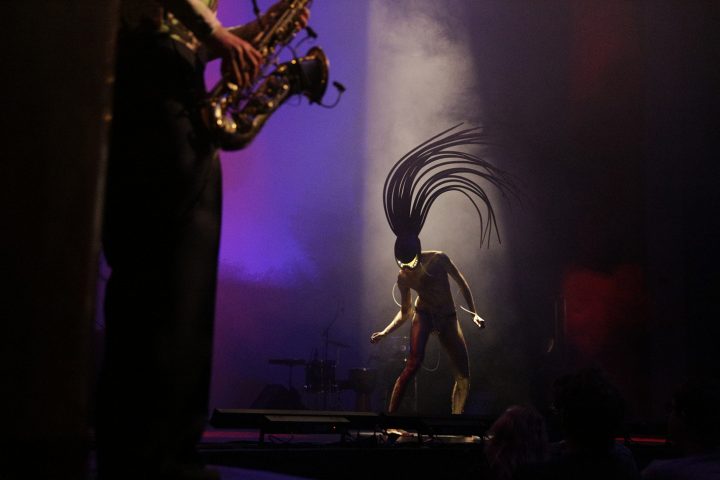
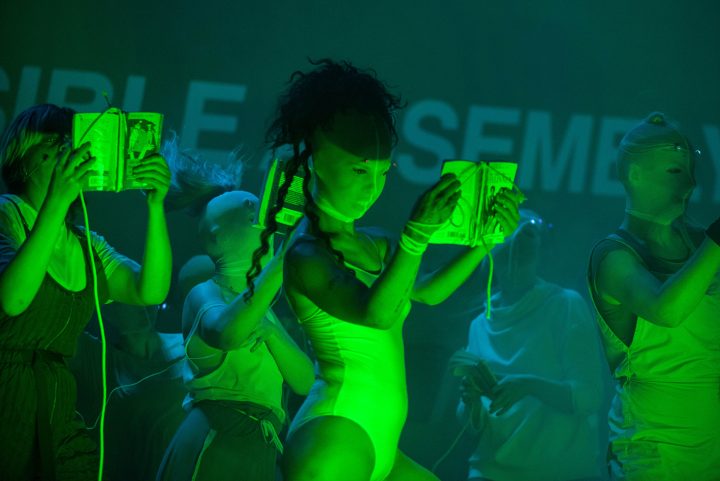
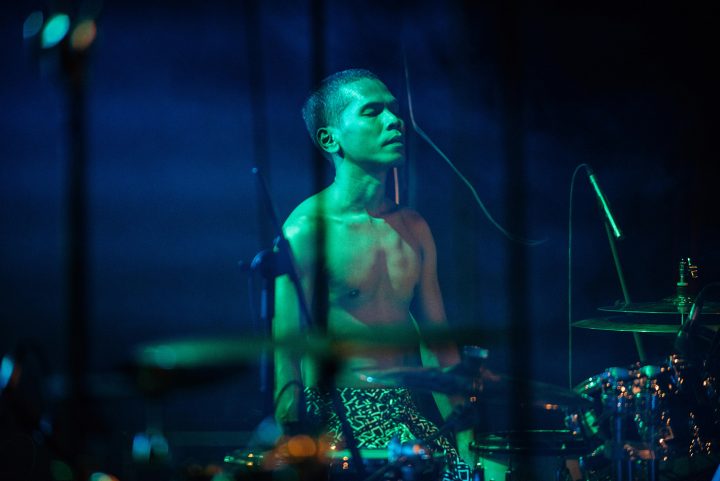
The festival starts shaping this dialogue from its basis through the selection of spaces collaborating, bringing on the same line DAAD –who have a strong profile of artistic investigation and academic exchange–, Hebbel Am Ufer, Bethanien and NGBK –locations destined to social and community dialogue– and the complete building of Berghain– better known as the temple of techno and electronic music. This selection evidences that there is an initial intention of confronting identities and generating miscellaneous discussions. The locations themselves were also challenged within their own manifestations, taking them outside their own concepts. An ice-rink was installed in the Halle (a floor inside Berghain) under the beautiful kinetic light work made by Christopher Bauder. Spaces as Berghain that are destined to adult recreation, are today under attack by the homogeneous politics of the states, the fervent capitalism that sickens the companies and the on-growing conservatism that affects the globe, giving birth to mono-aural and discriminatory societies. Because of this, the revalorization of these locations as important culture fluxes is urgent, if we are directing our future to free and pacific coexistence.
Although “Eishalle” did not fulfill the more professional skater’s expectations, it still generated a different place of encounter for the Berliners.
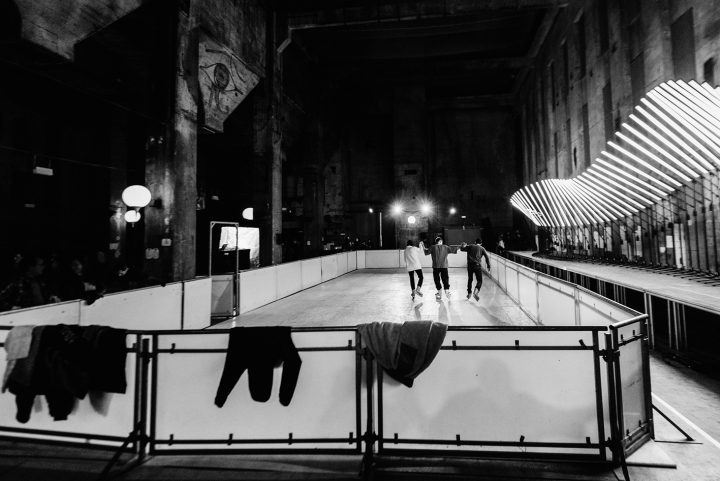
Places like Berghain and Festsaal Kreuzberg were home to all the nocturne activities, harboring dozens of artist during the whole week of the festival. Although assisting to all events is almost an impossible task, it was easy to identify the consideration for diversity, and the appreciation for distortion that persisted as a baseline of the sound explosion that took place on these days. We could enter a world of absolute sonic thinking, communicating only through sounds, prior to words and language. Incorporating new possibilities of behavioral listening was the challenge presented through the science fiction of sonic phenomenology, traveling from primitive spaces to distant futures, guided by the sound discourses of the artists.
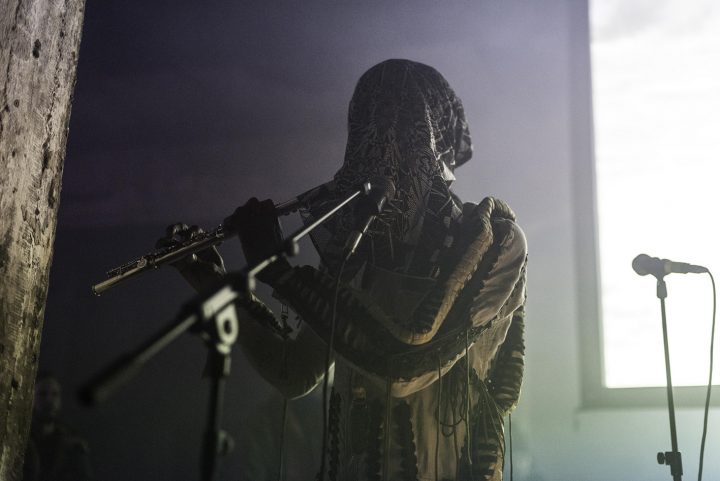
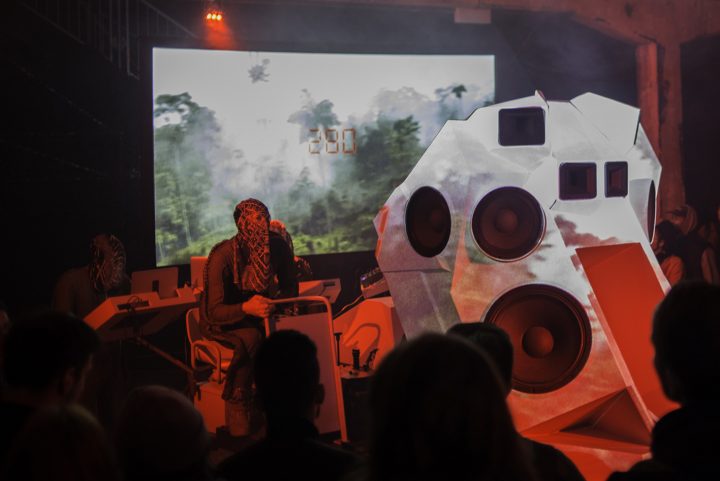
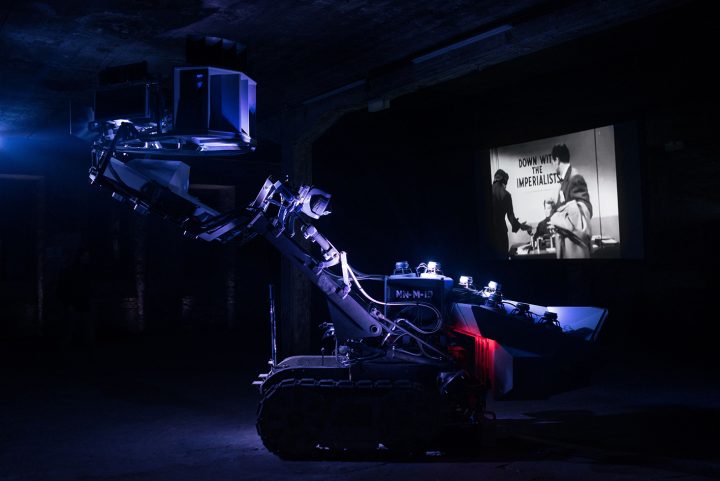
A good example of this was Nik Nowak’s Mantis. He built a two-ton tank-shaped sculpture with an arsenal of speakers, which extended towards the ceiling in a hydraulic biomimetic maneuver, getting ready for the battle 4 meters high and facing an older work from Nowak –Panzer– above a barbed wire grating. Added to the visual projections of Moritz Stumm, the whole work was evidently referring to the sonic wars that took place in the limits of Berlin during the cold war at the beginning of the 60s. The sculptures intervened with music by Nowac and Kode9, managed to alter for a few hours the linearity of time, merging passed events, present acts and future stages in one single chaos of information.
There is some unease in respect to the use of technologies, when they are intended to express certain emotions or messages, whether they are social/political or rather aesthetic. Traditionally, art and music (and I am not talking about the classic tradition of the west, but the mysticism of the east) generate a sentiment or a thought, which results from the complete action. The work is a living being itself and within its meaning, hides a soul (Khan, 1996). Machines –as material– provides a new medium of infinite possibilities, and that is naturally expansive; sometimes. It also happens (sometimes) that there is so much energy devoted to understanding the use of such technologies, that the previously mentioned should of the work weakens, by neglecting the use of words and symbols in a poetic intention, from their phenomenology. These are for me crucial elements for the congruency of an artistic body. How are silence and the non-sonorous language incorporated in a performance that is in principle built around the sonorous?
In relation to this, it’s worth to highlight the work Love and Rage, presented in daadgalerie by Israel Martinez and the Love and Rage Ensemble, who achieved a fine balance between all the elements just mentioned, managing to transmit a harmonious message making use of both technologies and organic materials, diffusing the limits that separate the living and the non-living. In contrast to this, was Sogokuru of Aurélie Nyirabikali Lierman, which while also interested in the comprehension of aural versus visual realities, made me doubt whether the technological elements were playing with it or against it, hindering the performance especially for the audience sitting in the front of HAU 2 theatre, who were not able to perceive the difference between the organic sound and the sound coming from the headphones.
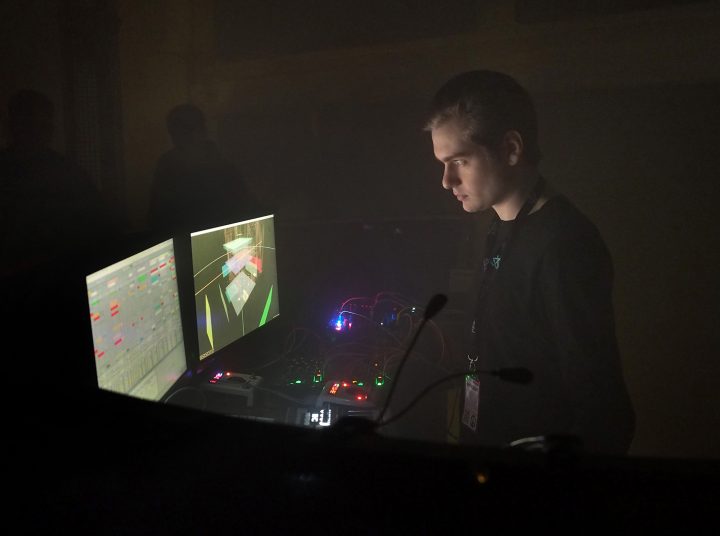
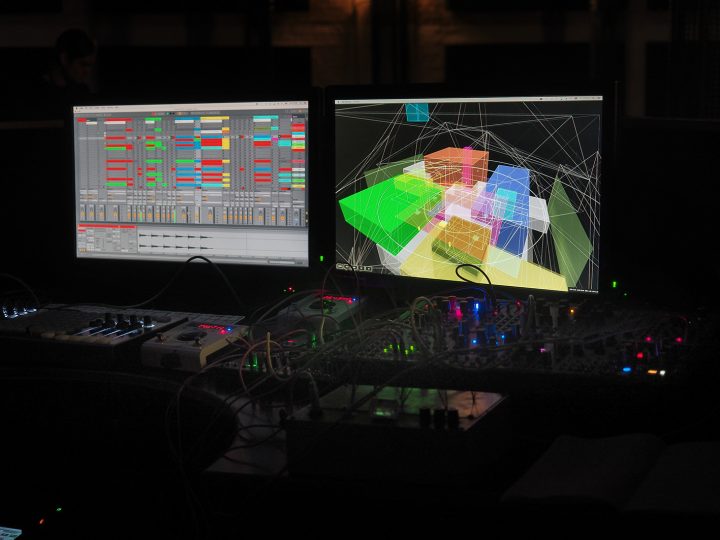
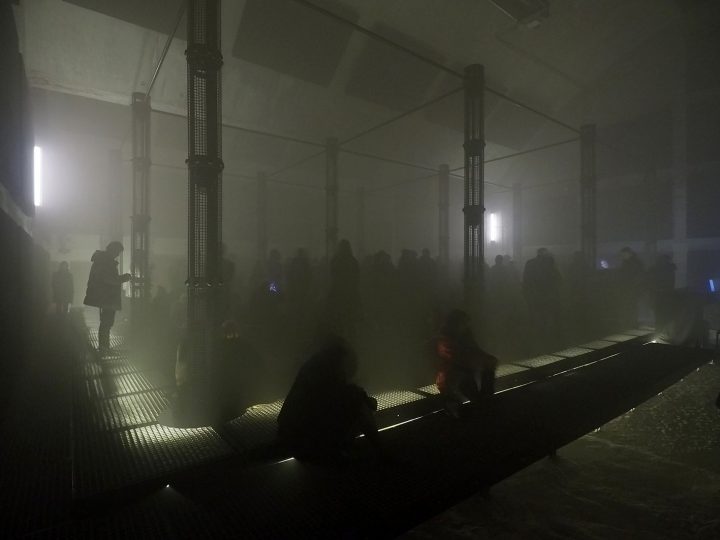
The previous stage of development and mastering of the technique is what allows the later transfer from metaphysics to form, the artist acting as a channel and evidencing the potential of the material. This process gained special meaning through the work of Casimir Geelhoed. The artist from Holland developed the software for the system in MONOM, the space for 4D spatial sound contained in the well-known culture industry: the Funkhaus. It was in this moment when psychedelia really entered the conversations, the senses being completely obscured by the use of smoke and the highly precise manipulation of the sound waves that were traveling full-speed around the room, making It hard not to lose balance both spatial and emotional. Geelhoed journeyed across anxiety, confusion, over-stimulation, and struggle. The artist persisted in day-to-day sounds and used them as the triggers for those emotions. Drew McDowall, a legend in experimental sound and exploration of the Psyche, followed him.
The influence of the academy was, as usual, a double-edged sword. The abuse of words and language in a hearing context, where the use of sound is already an independent language itself, and in a space where the audience’s ears are sensitive enough– can create the opposite effect when discourse is being transmitted through an artwork. We can look at Pedro Oliviera, whose speech is usually dynamic, stimulant and successfully anarchic. When his discourse was translated into a performance platform as HAU 2, the saturation of sounds and concepts transformed the aesthetic of the message from moving to slightly violent, awakening a completely different range of emotions, that somehow didn’t correspond to the work of the artist.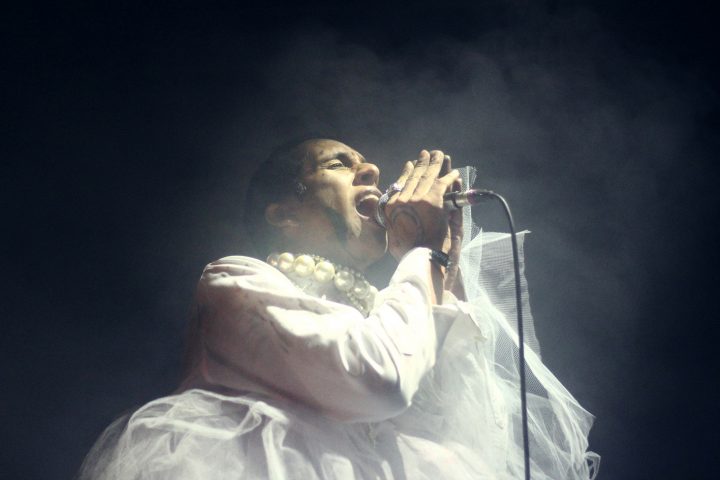
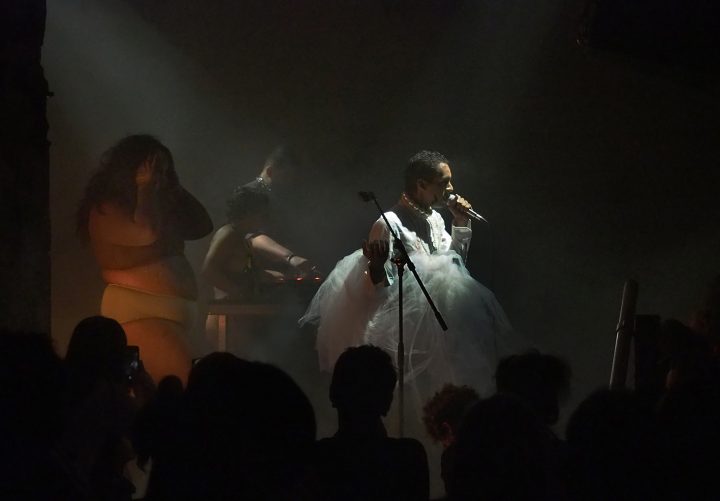
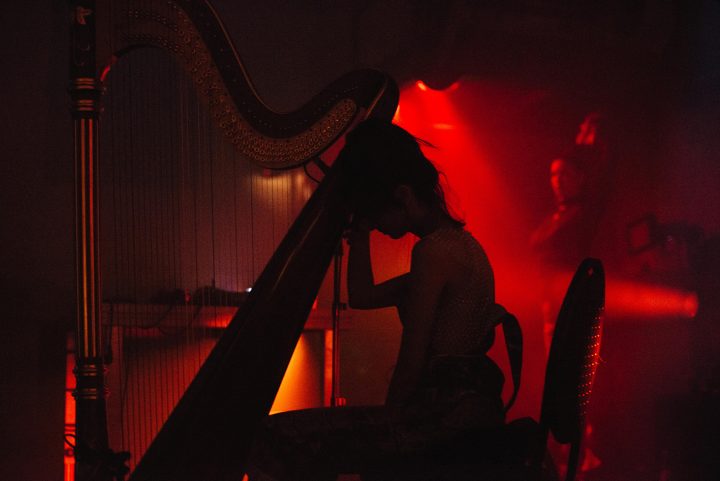
Regardless, these were the minority of the cases. There was an environment of respect and commitment to the space for performance and towards the boycott of preconceived ideas, going after the conservative cultural climate through persistent noise and erratic beats. Gender identity was also a topic of discussion after the underground Brazilian star Linn Da Quebrada ran over complete festivals with performances and a film. Also, this was the intention of the Venusian goddess Eartheater, who unfolded her soul in lyrical melodies with the company of a full-sized harp, challenging the main floor in the techno temple, its strict beats and the predominant male energy present in the darkest corners of the building.
“Artists worldwide are persistently opposing social and political injustice and nationalist backsliding. But equally persistent are the anti-liberal and traditionalist forces that assert their power, which is apparent not only symbolically but also long-since structurally. In this climate, artists are under pressure to express themselves, to take stance, and even to act. Yet in the course of a general tide of re-politicization, artists are also once again increasingly engaging and intervening in social and political discourses.” [2]
[1] Baurhenn, O., Rohl, J., Schuurbies, R. (2019, Febrero). Persistence. CTM Magazine 2019 pp.2
[2] Wolf, L. (2019, Febrero). Pop, Politics and Persistence: Popular culture between delimitation and activism. CTM Magazine 2019 pp.42
Sources
-Voegelin, S. (2019) The political possibility of sound. New York: Bloomsbury.
-Khan, H. I. (1996). The mysticism of sound and music. Boston: Shambhala.
-CTM 2019 Persistence Magazine (2019) Berlin: Disk.

 Español
Español